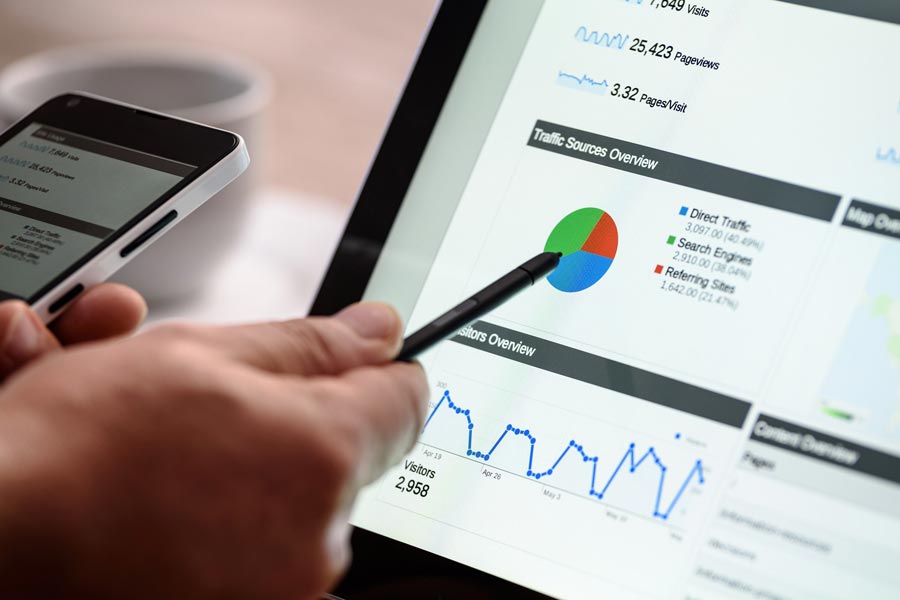In today’s digital era, online competition has become stiffer each day. Earlier, there used to be only a few known players offering a product/service. But today, there are hundreds for each. So, how your customers perceive your brand has become more important than ever. With the rise of social media platforms, customers express their likes and dislikes more openly than ever. Be mindful that one good customer can bring in many more customers, but at the same time, one bad experience can take away many potential customers, too. That’s where digital sentiment analysis comes in handy.
This article will discuss how businesses can use vast amounts of data to gauge public sentiment and effectively shape their brand’s perception. So, let’s dive right in.
What is Digital Sentiment Analysis?
Digital sentiment analysis evaluates people’s talk and reviews about brands or products online and their overall attitude toward them. This technology uses natural language processing (NLP) and machine learning (ML) to classify the sentiment in a given text, such as messages in social media, reviews, and comments. It is an essential way of discovering people’s perceptions of a brand, product, or service. Microsoft Azure technologies are one of the earliest and most prominent names for this technique. Today, we have many digital sentiment analysis tools in the market: Hootsuite, SproutSocial, Lexalytics, Brandwatch, MonkeyLearn, etc.
The Impact of Digital Sentiment Analysis on Brand Perception
These days, with globalization and people being more interconnected with brands than ever before, brands are always under the microscope. With popularity comes responsibility, right? Consumers voice their opinions through social media networks, and trends affect society. Digital sentiment analysis, fortunately, makes it possible for businesses to engage in such discussions to get a feel for how they are being perceived.
Here is how sentiment analysis influences brand perception among consumers.
1. By identifying consumer sentiments and the latest trends.
Digital sentiment analysis helps your business identify and filter online what your consumers say about your brand, products/services, customer support, etc. They track your social media posts and their engagement, reviews about your brand over the web, and detect commonalities and patterns to identify the latest trends and truthfulness of their intentions. It helps you determine what your customers love and don’t.
2. By providing real-time feedback and brand adaptation.
Businesses can monitor their marketing platforms, such as their website, app, social media, etc., in real-time and make instant adjustments whenever required. It also saves money on marketing campaigns. Once you realize what is not working and what is working, you can easily adapt to your brand’s perception.
What are the Benefits of Digital Sentiment Analysis for Brands?
Brands can greatly use social media and online sentiment analysis to know how customers feel about their products, services, or brands. Companies can make better decisions since info is gathered from social media, reviews, and any other content. Below are why digital sentiment analysis (DSA) will be useful for your brand.
1. DSA can enhance customer experience.
Digital sentiment analysis helps you understand your customers at a micro level. It allows you to personalize and enhance your marketing campaigns.
When you learn about your customer’s pain points, you will be equipped with the necessary tools and techniques to improve customer support and be available to resolve their queries.
2. DSA can help you make informed decisions.
With the help of digital sentiment analysis, you can improve the quality of your products/services. You can also innovate and enhance the existing features of your products. This analysis will also help you stay up-to-date with market trends and opportunities. You will be able to analyze your competitors and stay ahead of them.
3. DSA helps you manage your online reputation.
Negative comments or feedback on social media channels can quickly escalate into discussions and blow out of proportion if not responded to correctly. Thus, digital sentiment analysis can help you determine the root cause of the issues and resolve them to minimize the damage.
With these frequent analysis results, you can monitor your brand’s activity when you are not posting or sharing content on social media or your website. It helps you monitor any new developments regularly.
Also Read: Reasons to improve your digital marketing strategies
Challenges and Limitations of Digital Sentiment Analysis
Data sentiment analysis is useful for measuring and tracking consumer feelings and opinions. Nevertheless, it has its drawbacks and issues. Businesses need to pay attention to these challenges when considering sentiment analysis. Here are the common challenges and measures that will help you overcome them.
What are the Common Challenges in Sentiment Analysis?
- Analyzing users’ sarcasm and irony can be difficult. Developing such algorithms can be tedious and not always accurate.
- Different regions have different languages, and some of them can be complex to comprehend because they use islands and idiomatic expressions.
- Filtering a vast amount of information and data can be difficult. There will be spam comments, incessant trolls, fake reviews, etc.
How to Overcome These Challenges?
- You need to develop advanced algorithms and improve the accuracy of the existing ones.
- You must also integrate human insights and not leave everything to AI-powered tools.
Future Trends in Digital Sentiment Analysis
We are looking for more revolutionary developments in sentiment analysis shortly. Here are two trends expected to be popular by the end of 2024.
- Predictive sentiment analysis helps in learning about customers’ perceptions beforehand.
- Integration with augmented reality (AR) and virtual reality (VR) to personalize the user experiences.
Key Takeaways
As consumer behavior slowly changes along with technological developments, sentiment analysis remains an important tool for understanding clients’ needs and demands. Therefore, to carve a market for themselves in the digital world, businesses must keep themselves updated and informed about the latest trends and innovations related to sentiment analysis.
The subject matter experts at Mavlers, who have shared their experiences and expertise of working with clients by doing digital sentiment analysis, reveal that it’s crucial to incorporate modern developments in sentiment analysis. Digital technologies and innovations are excellent tools for obtaining a more profound perception of the audience, improving the perceived brand image, and promoting strong brand associations with the target audience.











